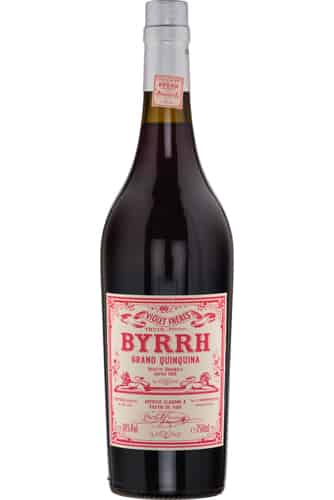Byrrh (1 Liter)

Byrrh (1 Liter)
Fancy a beer? How about a Byrrh? Yes, the two words are pronounced the same way, but the two drinks are extremely different.
Byrrh is an aromatised wine-based aperitif, produced in Thuir, in the South of France. The wine was first created in 1866 by Pallade and Simon Violet, to capitalise on the craze for quinine infused wines, or “tonic wines”. This also allowed the wine to initially be classed as a health drink, sold at pharmacies (which also placated local aperitif producers, who did not appreciate the competition).
The liqueur blends “mistelle” – a syrupy, fruity mixture created through the maceration of grape must (Carignan and Grenache grapes are used) – with dry red Roussillon wines, and crushed quinine bark.
Byrrh is still produced at Thuir by Pernod-Ricard, who purchased the brand in 1977. Part of the distillery was designed by none other than Gustave Eiffel.
The ruby red liqueur offers up notes of tonic water, dried cranberries, prunes, red wine, raspberries, some slight bitter herbs, pomegranates and liquorice.
Traditionally enjoyed with ice and a slice of lemon, this is one of the better French liqueurs.


